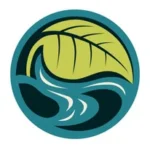My Time with the Eagles
by James Holtzclaw, Interpretive Naturalist
During my first week as an interpretive naturalist, I was in a kayak, floating down the Elkhart River with my supervisors. We saw Sandhill Cranes, King Fishers, Chimney Swifts, and Cedar Waxwings that day. During a break from kayaking, I looked at Donny, one of my supervisors, and said, “We need to see a Bald Eagle.” About thirty minutes later, Donny shouted, “Bald Eagle!” I glanced in the direction he was pointing, and there, soaring gracefully above the tree line, was a majestic Bald Eagle. I spotted that eagle, marking the first of thirty-seven I have seen since relocating here. That trip created my first unforgettable experience while working for Elkhart County Parks.
I had searched for Bald Eagles since I was in first grade when my father took me out of school on a December day. We drove around Raccoon Mountain near Chattanooga, Tennessee, looking down into Lookout Valley for Bald Eagles. He did this to distract me from thinking about my sick grandfather’s upcoming death. I didn’t see any eagles that day, but I remembered that therapeutic trip in the wild. That day might have been the first day I realized that nature can help heal a broken heart.
The first Bald Eagle that I spotted did not occur in the South but at Yellowstone National Park on a father-son trip. As we entered this great park, one flew over our vehicle. I strained my neck, peering through the windshield while my father drove, determined not to lose sight of the eagle.
My favorite memory of a Bald Eagle occurred on a school trip to the Boundary Waters. On that trip, I was alone on a bank, looking at the sunset. There, I couldn’t help but feel a pang of worry for my wife, who was alone somewhere. I prayed for her safety, and then a Bald Eagle landed in a tree beside me. At that instant, I felt a sense of reassurance, knowing that she would be safe and sound.
I blamed Rachel Carson for these great memories. Her book Silent Spring alerted the public to the plight of the Bald Eagles. By raising the alarm about how the pesticide DDT thinned their eggshells, making them vulnerable to crushing during incubation, Carson drew attention to a critical environmental issue. By 1963, only 417 nesting sites of the Bald Eagle were known to exist in the United States. Carson’s writings had a profound impact, leading to significant policy changes in pesticide use. These efforts contributed to the protection of Bald Eagles, and Carson’s legacy played a pivotal role in the eventual ban of DDT in the United States, facilitating the recovery of the Bald Eagle population. In 2020, the lower United States was home to an estimated 71,467 Bald Eagle nesting sites.
In Indiana, habitat loss led to the extirpation of the American Bald Eagle by 1900. Researchers recorded the last known nesting site in 1897, and it wasn’t until 1991 that researchers observed another. Between 1985 and 1989, conservationists reintroduced seventy-three Bald Eagles into the state. By 2020, researchers estimated that 350 nesting sites existed in Indiana.
I wanted to witness this success, so my wife and I ventured to Salamonie Lake, located southwest of Elkhart, Indiana. Krista, my hiking and birding companion, and her family were excited to go on this escapade with us. We found ourselves in her family’s van, going down icy backroads and listening to the melodies of REM and U2, entertained by her husband’s dad’s jokes and funny life stories. Our goal was not to see one eagle but many. To do this, we needed help from the DNR.

We participated in the DNR’s Eagle Watch, a program that was open to the public. We found ourselves in a caravan listening to a park ranger’s talk about eagles via the radio and traveling to spots around the lake, spying on Bald Eagles. At each stop, we stepped out of the van and braved the ice and wind to look across the lake’s mudflats for eagles perching in trees or flying above the lake’s low waters. Sometimes, we had to look through the fog to see these large birds; at times, we only saw their silhouettes in the trees. On our second stop, we were treated to hot dogs and hot chocolate while watching a birds-of-prey program. This wasn’t just a public program for eagle watching; it was an annual initiative that fostered a connection between the public and our national bird, the majestic Bald Eagle, while also serving as a celebration of this iconic creature.

In the past, when you looked up and saw a Bald Eagle, what was your reaction? Were you in awe? Did you feel patriotic? When I saw sixteen Bald Eagles at Salamonie Lake, I felt proud. These birds were likely the descendants of the eagles that had been released in Indiana during the 1980s. So, I was proud because we, as Americans, came together to save our national bird. We found common ground to work together to ban DDT and created policies to save these awesome feathered creatures. We did this because we knew that our nation would not be the same without the Bald Eagle, a national icon. Because of this, we safeguarded future memories to cherish, such as witnessing these magnificent black and white birds soaring in the sky or observing them perched in the trees.



